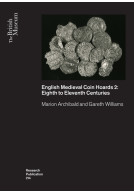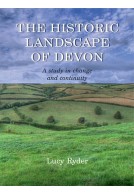The Vikings in the Hebrides (Paperback)
Imprint: Windgather Press
Pages: 272
Illustrations: 200 B/W and color illustrations
ISBN: 9781914427398
Published: 30th April 2025
Script Academic & Professional
Pages: 272
Illustrations: 200 B/W and color illustrations
ISBN: 9781914427398
Published: 30th April 2025
Script Academic & Professional
You'll be £38.00 closer to your next £10.00 credit when you purchase The Vikings in the Hebrides. What's this?
+£4.99 UK Delivery or free UK delivery if order is over £40
(click here for international delivery rates)
Order within the next 6 hours, 27 minutes to get your order processed the next working day!
Need a currency converter? Check XE.com for live rates
(click here for international delivery rates)
Order within the next 6 hours, 27 minutes to get your order processed the next working day!
Need a currency converter? Check XE.com for live rates
The Vikings in the Hebrides provides an introduction to the Viking colonisation and Norse occupation of the Outer Hebrides. Our knowledge of this period in the Hebrides has until recently been minimal as the historic evidence was negligible and the archaeology limited. However, two recent excavations at Bornais and Cille Pheadair have transformed our understanding of the period in the region. These two excavations will provide much of the information that is set out in this book but there is also a comprehensive review of other important discoveries such as the Lewis Chessmen, the burial at Cnip, Lewis and the silver hoards from Stornoway Castle and Dibidale in Lewis.
The excavations at Bornais have transformed our understanding of the Norse settlement of the North Atlantic. It is possible to chart the evolution of domestic houses from the Viking longhouse to the post-Medieval croft, to analyse the distribution of finds on the house floors and to critically assess gender relationships over this long period.
The excavations have also produced large quantities of finds that demonstrate the links between the Western Isles and the wider world. These include important assemblages of bone combs and comb making debris which enable a discussion of craft production and the fluctuating relationship of the Hebrides, the Irish Sea zone and Scandinavia. The presence of exotic green porphyry from Greece, amber, Ringerike art, pottery from the Bristol Channel, coins from Scandinavia, England and the Low Countries all provide opportunities to contextualise the settlements and the region in the wider Medieval world.
This book places the Outer Hebrides at the centre of the Viking World and provides a unique contribution to our understanding of the islands’ importance at the critical period when Scotland was emerging as a major Medieval kingdom.
Customers who bought this title also bought...
Other titles in Windgather Press...
















